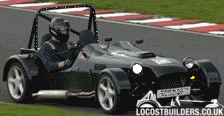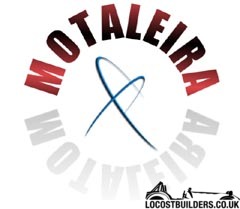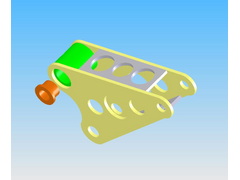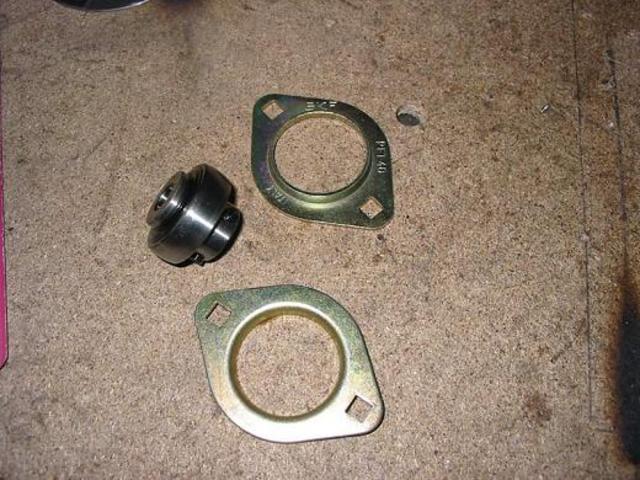pmw
|
| posted on 13/9/07 at 12:49 PM |

|
|
Pushrod suspension rocker - what bearing?
I've got pushrod suspension and run a rocker to connect the pushrod to the shock. At the moment I'm running a poly-bush where the rocker
hinges on the body, it all works fine, but I'd rather run a bearing of some sort - any suggestions where I might get such a thing ?
|
|
|
|
|
Agriv8
|
| posted on 13/9/07 at 01:03 PM |

|
|
take rocker and bolt to your local bearing supply Company.
Where in West yorks are you ? We have an excelent one in Keighley.
regards
Agriv8
Taller than your average Guy !
Management is like a tree of monkeys. - Those at the top look down and see a tree full of smiling faces. BUT Those at the bottom look up and see a
tree full of a*seholes .............

|
|
|
gttman
|
| posted on 13/9/07 at 01:23 PM |

|
|
I purchase Bike wheel bearings from Ebay (CBR 600 fronts from memory) for mine. about £10 a pair but you will need to make the housings to suit.
Andygtt
Please redefine your limits
|
|
|
nitram38
|
| posted on 13/9/07 at 01:27 PM |

|
|
I have used nylon bushes on the F1-2 and I am going to use oilite bearings on the Motaleira.
Either will do on a light car as long as you make the material thick enough

|
|
|
kb58
|
| posted on 13/9/07 at 01:36 PM |

|
|
I used ordinary spherical bearings riding on a shaft.
Mid-engine Locost - http://www.midlana.com
And the book - http://www.lulu.com/shop/kurt-bilinski/midlana/paperback/product-21330662.html
Kimini - a tube-frame, carbon shell, Honda Prelude VTEC mid-engine Mini: http://www.kimini.com
And its book -
http://www.lulu.com/shop/kurt-bilinski/kimini-how-to-design-and-build-a-mid-engine-sports-car-from-scratch/paperback/product-4858803.html
|
|
|
britishtrident
|
| posted on 13/9/07 at 02:46 PM |

|
|
quote:
Originally posted by nitram38
I have used nylon bushes on the F1-2 and I am going to use oilite bearings on the Motaleira.
Either will do on a light car as long as you make the material thick enough
Car might be light but loading on a bearing in this application is very high, even the static load is over 2 times corner weight ---- I would
select a bearing based on 5 to 8 times the corner weight.
[I] “ What use our work, Bennet, if we cannot care for those we love? .”
― From BBC TV/Amazon's Ripper Street.
[/I]
|
|
|
bimbleuk
|
| posted on 13/9/07 at 03:03 PM |

|
|
I believe the Striker rocker upgrade uses spherical bearings on a shaft. You could always call Mel at RAW as he's very helpful.
Makes a huge difference as the poly bushed rockers eventually deform and start to bind!
|
|
|
nitram38
|
| posted on 13/9/07 at 03:42 PM |

|
|
Oilite bearing is brown.
There is one either side of my cam.
I have also put a grease nipple in the bush carrier (green bit) to add grease without having to disassemble.
 
front cam assembly
[Edited on 13/9/2007 by nitram38]

|
|
|
Confused but excited.
|
| posted on 13/9/07 at 06:00 PM |

|
|
As I understand it, a rolling bearing must rotate more than the circumference of the rotating elements of the bearing. This is why for small angles of
deflection the tendecy is to use needle rollers, for situations such as little end bearings.
If the ball in a ball race does not rotate more than 360 degrees and travel more than it's circumference, then it wears a local spot in the
race.
So I would think that, sealed for life needle rollers offer the best solution for this application. IMHO.
Tell them about the bent treacle edges!
|
|
|
v8kid
|
| posted on 13/9/07 at 07:15 PM |

|
|
Ah! So thats why people use needle roller bearings then.
|
|
|
Tralfaz
|
| posted on 13/9/07 at 07:25 PM |

|
|
quote:
Originally posted by Confused but excited.
As I understand it, a rolling bearing must rotate more than the circumference of the rotating elements of the bearing. This is why for small angles of
deflection the tendecy is to use needle rollers, for situations such as little end bearings.
If the ball in a ball race does not rotate more than 360 degrees and travel more than it's circumference, then it wears a local spot in the
race.
So I would think that, sealed for life needle rollers offer the best solution for this application. IMHO.
Agreed, Sealed Needle.
T
|
|
|
kb58
|
| posted on 13/9/07 at 07:48 PM |

|
|
If you use needle bearings, be aware that if the bearing rotates a very small amount, it's possible that only one bearing is taking the load.
This can result in the race getting a dent in it, since the bearing doesn't move much. Using needle bearings with small diameter bearings can
avoid this.
[edit] "Confused but excited" beat me to it.
[Edited on 9/13/07 by kb58]
Mid-engine Locost - http://www.midlana.com
And the book - http://www.lulu.com/shop/kurt-bilinski/midlana/paperback/product-21330662.html
Kimini - a tube-frame, carbon shell, Honda Prelude VTEC mid-engine Mini: http://www.kimini.com
And its book -
http://www.lulu.com/shop/kurt-bilinski/kimini-how-to-design-and-build-a-mid-engine-sports-car-from-scratch/paperback/product-4858803.html
|
|
|
britishtrident
|
| posted on 13/9/07 at 07:48 PM |

|
|
Oillite bearings and grease don't mix well --- the idea is the pre-soaked oil is drawn to the bearing surface through the pores in the
bearing.
[Edited on 13/9/07 by britishtrident]
[I] “ What use our work, Bennet, if we cannot care for those we love? .”
― From BBC TV/Amazon's Ripper Street.
[/I]
|
|
|
caber
|
| posted on 13/9/07 at 08:08 PM |

|
|
I agree with British trident, I remember boiling oilite bearings in oil to reload them!
Caber
|
|
|
nitram38
|
| posted on 13/9/07 at 08:23 PM |

|
|
Oilite bearings are used in industries where grease is not allowed such as food production machinery, hence the self lubrication or in locations where
grease would attract dirt.
That is the main reason that grease is not added.
Adding bearing grease is not a problem on my design, whereas a bearing drying out is.
If you use them the manufacturer recommends reboiling them in Sae 30 oil every every 1000 hours or annually unless thay are within oil splash etc.
Additives such as Molybenedium Sulphide should be added if the shaft is hardened or is stainless steel etc.
Putting a grease nipple on ensures quick maintenance so that the bearing does not run dry in the first place.
Here is the answer I recieved from Oilite themselves:
Martin,
If you are using the bearing in a 'dynamic' application whereby a shaft is revolving at speed within the bearing, then an application of
grease between the bearing and shaft will prevent the oil in the bearing from being released into the running clearance. The self lubricating
properties of the bearing are therefore impared.
If the bearing is used to support a hinge pin or similar where there is little or slow movement then there is likely to be no effect.
Regards
Peter Farthing
Quality & Devlopment Manager
In otherwords, for the suspension cam purpose, it will be fine.
[Edited on 14/9/2007 by nitram38]

|
|
|
pmw
|
| posted on 14/9/07 at 10:25 PM |

|
|
After much asking around, including a couple of people who've done the job on race-cars. The most common method seems to be
"Y-bearings" produced by SKF
http://www.skf.com/portal/skf/home/products?maincatalogue=1&newlink=6_1_1&lang=en
These are available with mounting flanges idea for mounting in the rocker.
See also http://www.c42.mride.se/pushrod.html
|
|
|
kb58
|
| posted on 15/9/07 at 01:01 AM |

|
|
Really? Those are way, way over built. Incredibly heavy for use on a race car. I do see these parts being used, but it's always on heavy
machinery, supporting shafts. Never seen one on a race car though.
Mid-engine Locost - http://www.midlana.com
And the book - http://www.lulu.com/shop/kurt-bilinski/midlana/paperback/product-21330662.html
Kimini - a tube-frame, carbon shell, Honda Prelude VTEC mid-engine Mini: http://www.kimini.com
And its book -
http://www.lulu.com/shop/kurt-bilinski/kimini-how-to-design-and-build-a-mid-engine-sports-car-from-scratch/paperback/product-4858803.html
|
|
|
nitram38
|
| posted on 15/9/07 at 08:08 AM |

|
|
"Y" bearings are OTT!
I have them on my car but they support my diff:
[img][/img]

|
|
|
andyps
|
| posted on 15/9/07 at 11:01 AM |

|
|
Y bearings are mainly for industrial use, also often used in agricultural applications. I have never seen one small and light enough to be considered
appropriate for a seven type car, unless you were building with massive over engineering and therefore weight.
Andy
An expert is someone who knows more and more about less and less
|
|
|
pmw
|
| posted on 15/9/07 at 07:19 PM |

|
|
They also do them this size. Totally agree that the above bearings are way over engineered. But things come in different sizes folks !
 
Rescued attachment 156-5671_web_IMG.jpg
|
|
|
andyps
|
| posted on 18/9/07 at 07:34 PM |

|
|
But that is not a true Y bearing - it is a bearing and a couple of pieces of pressed steel!!
[Edited on 18/9/07 by andyps]
Andy
An expert is someone who knows more and more about less and less
|
|
|
nasty-bob
|
| posted on 18/9/07 at 08:47 PM |

|
|
For what its worth, I'm using a pair of sperical bushings (as in 2 per rocker). I can't help but think things might all go a bit
'wobbly' with just one (push rods and dampers mounted on spericals also).
With 2 you remove the degrees of freedom and can also handle a reasonable amount of axial load (not that there should be any).
How do you guys restrain the needle roller bearings axially?- I have seen people mount them with spacers onto the cage but I didn't like that,
hence the pair of sphericals.
Cheers
|
|
|
azzacat
|
| posted on 3/10/07 at 11:32 AM |

|
|
quote:
Originally posted by nitram38
Oilite bearing is brown.
There is one either side of my cam.
I have also put a grease nipple in the bush carrier (green bit) to add grease without having to disassemble.
 
front cam assembly
[Edited on 13/9/2007 by nitram38]
Hi there, I Have made some Oilite bushes for a similair setup.
What thoughts do you have on the side loading of the vertical surface of the bush?
I plan to center my assembley with custom spacers and wonder what meterial would be ideal for the bush to run against.
Aaron
|
|
|
nitram38
|
| posted on 3/10/07 at 05:14 PM |

|
|
I am using mild steel, as the bush by nature is a bearing.

|
|
|









